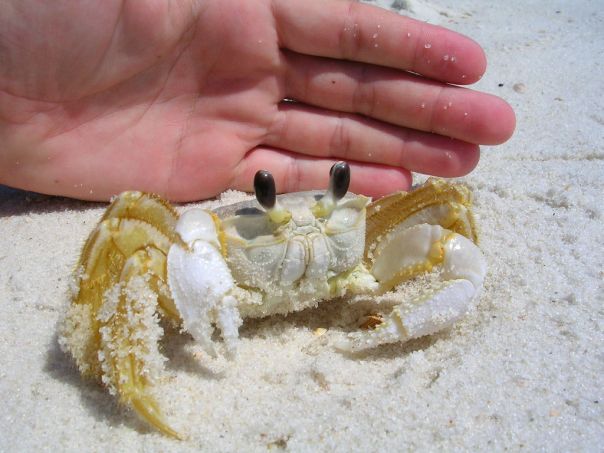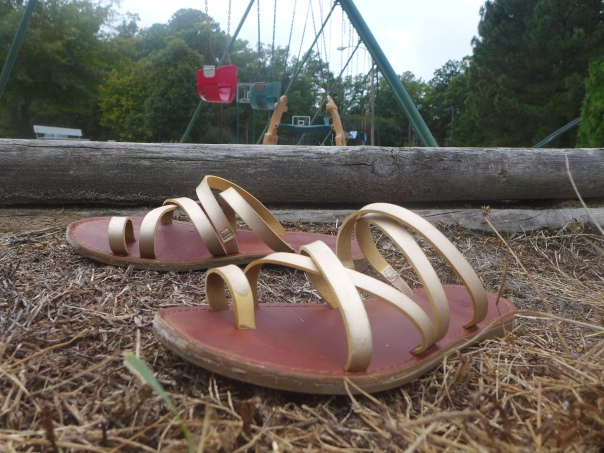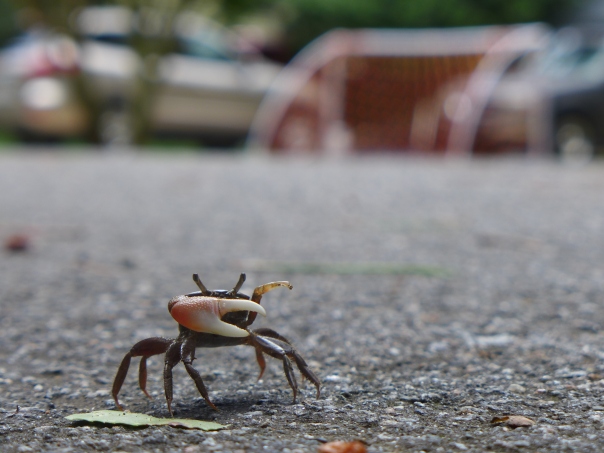This week a young man in Australia was attacked by something while he was swimming in the ocean. His legs were bloodied and covered with hundreds of small bites. At the hospital, doctors were baffled about what bloodied the young man’s legs. The dad – who rocks in this story – went back into the water with a bloody steak and collected the small, flea-like animals. They were identified as amphipods, which are small crustaceans. If Sharknado has taught us anything, a movie about flesh-eating amphipods can’t be far now. Let’s see what that movie trailer might look like.
************
A young, beautiful mother sits on the beach and watches her charming son, who she can’t believe is growing up so fast, swim in the ocean. Gulls wheel overhead and waves roll gently. The sky blue.
Boy: Mom, watch me swim.
Mom: Okay.
[cue the Jaws-theme music rip-off]
Cello: Duh-nuh
Boy: You watching?
Mom: Yes, dear.
Cello: Duh-nuh
Cello: Duh-nuh
[cue that voiceover guy]
That Voiceover Guy: Just when you thought it was safe to go back into the water again.
Cello: Duh-nuh, Duh-nuh, Duh-nuh, etc.
The boy screams and grabs his leg. His mother runs into the waves and pulls him out. His legs are bleeding but there’s nothing on them. A handsome and rugged marine biologist who looks just a little bit dangerous but you know you’d feel safe in his arms, runs over.
Mom: What did this!?
Ruggedly handsome marine biologist: They’re amphipods.
Mom: Oh my go…wait, what the heck are amphipods?
Director: CUT!!
************
What the heck are amphipods? They are small crustaceans related to shrimp and crabs and lobsters. Typically, they aren’t larger than your thumbnail. If you’ve picked up seaweed on a beach, you’ve probably seen them. They are the small animals flipping and tumbling around like fleas. Those are amphipods. Sometimes called ‘sand fleas.’ Or ‘beach fleas.’ Or ‘beach hoppers.’ Or ‘sea fleas.’ The ‘flea’ name refers to the shape of their body (pressed from the sides) and the fact that they can flip around using their tails.
The media has used the term ‘sea lice’, but that really refers to an isopod, which can be parasitic on fish and look like the rolly-pollies (aka doodle-bugs) you find under logs.
Are amphipods the new marine menace? A pack of ravenous, flesh-eating beasts that roam the oceans looking for prey? Well, no. They do eat flesh, but typically not live flesh. We marine biologists (both the ruggedly handsome and other variety) don’t think of amphipods as predators but as scavengers that eat dead plants and animals. They’re more like tiny vultures swimming through the sea looking for something dead to stick their heads into rather than wild dogs looking to tear apart a baby deer.
I study amphipods in the salt marshes of Massachusetts and Louisiana (you can see pictures of them below). Just like on the beach, if you pick up seaweed in the marsh, hundreds of little crustaceans will flip and spring until they can hide in the grass. Not much of a terror. In terms of diet, these amphipods are more interested in a rotting veggie burger than a hunk of a marine-biologist.
Then why did they attack the young man’s legs in Australia? We’re not sure. Amphipods can bite humans – sometimes beach runners will have a bite or two – but they have rarely caused such damage. The best guess is that the amphipods were in a feeding frenzy and the young man’s legs happened to get in the way.
While I’ve been playful with this story, as a father, I too would have been worried. As a marine biologist, I am curious. It shows that we still have a lot to learn. The next time I pick up an amphipod I will check to see if it’s wearing a handkerchief and holding a knife and fork.

Saltmarsh amphipod (Orchestia grillus). The orange color indicates its parasitized by a trematode. Plum Island Estuary, Massachusetts
P.S. Now that we have flesh-eating amphipods in the news, soon I will write about zombie amphipods. Stay tuned. Duh-nuh…
P.P.S. If you enjoyed this article then please post it on Facebook, Twitter, or your favorite social media. And don’t forget to follow me.






























 I’ll update the post later in the week with the answers.
I’ll update the post later in the week with the answers.